St Petersburg, FL – a city of 260,000 — has no fewer than nine art museums! The newest one, opened in September, 2021, is the exceptional Museum of the American Arts and Crafts Movement (MAACM). Like St. Pete’s Imagine Museum of international studio glass and the Dali and Chihuly museums, MAACM is a destination museum: attracting from around the globe devotees of a particular artist or type of art.
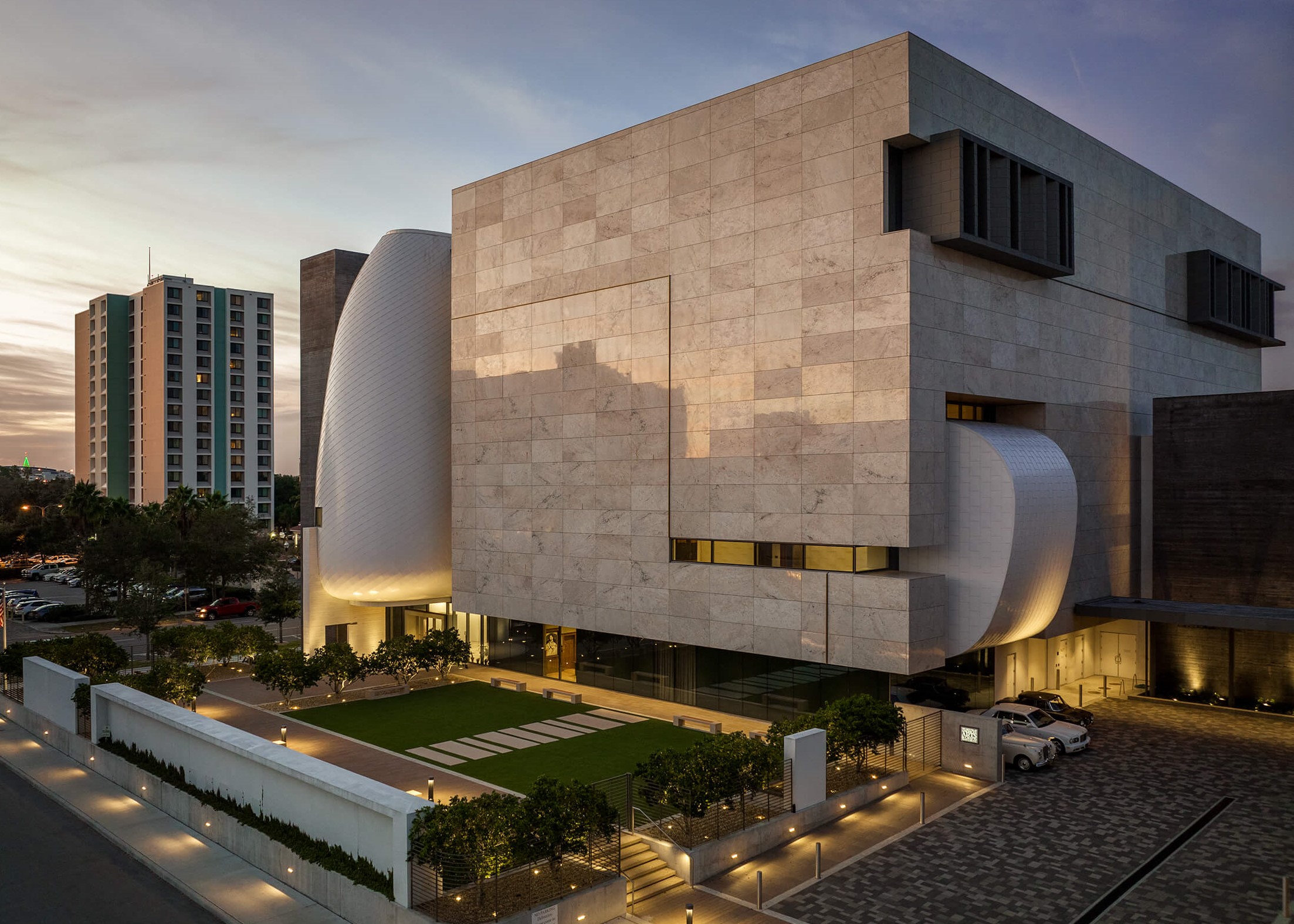
MAACM at dusk 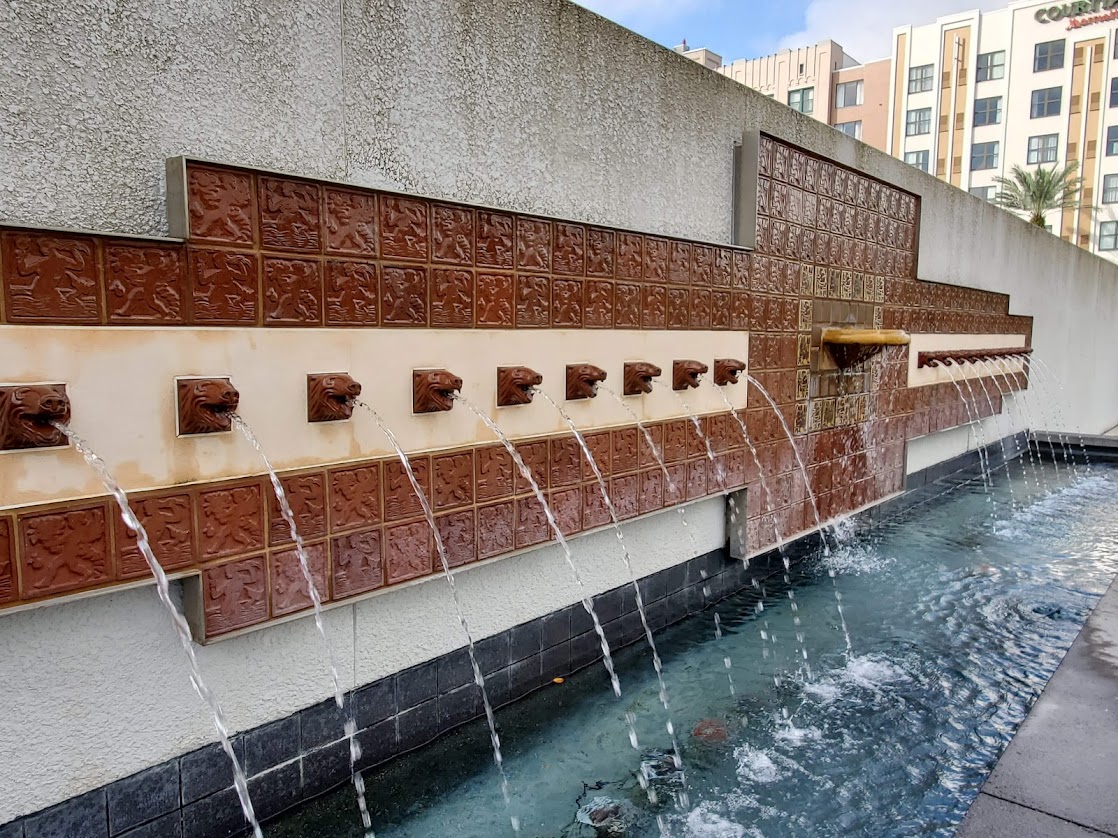
Fountain in entry garden
Years in the planning, the magnificent MAACM is the only museum in the world dedicated to the American Arts and Crafts Movement. The museum houses philanthropist Rudy Ciccarello’s private collection as well as the assets of the Two Red Roses Foundation, the non-profit educational organization he founded in 2004.
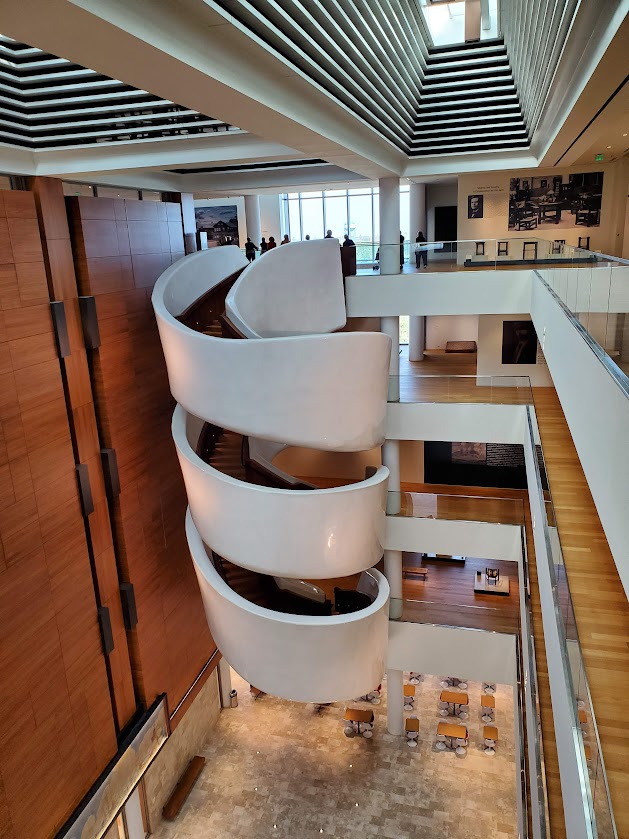
Staircase and lobby from above 
Staircase and skylights from lobby
Ciccarello worked closely with Alfonso Architects of Tampa, to design and oversee the creation of the museum. At a cost of $90 million, the five-story, 137,000 square-foot structure is a work of art in itself, with a soaring atrium featuring skylights and an imposing venetian-plastered spiral staircase. In all there are more than 40,000 square feet of gallery space, a retail shop, an excellent café, a research library, and more.
Ciccarello describes the unique building as “a contemporary design that. . . pay[s] homage to the basic tenets of the Arts and Crafts movement,” the oak flooring and the Frank Lloyd Wright-esque skylights, for example. But the white protuberance on the façade seems to perplex some passers-by. Some think the “ovoid” looks like a giant ceramic pot. To my eye, though, the shape is reminiscent of an old kiln. True to the principle of integrating form and function, the hollow structure encloses an intimate gallery space on each of the exhibit floors.
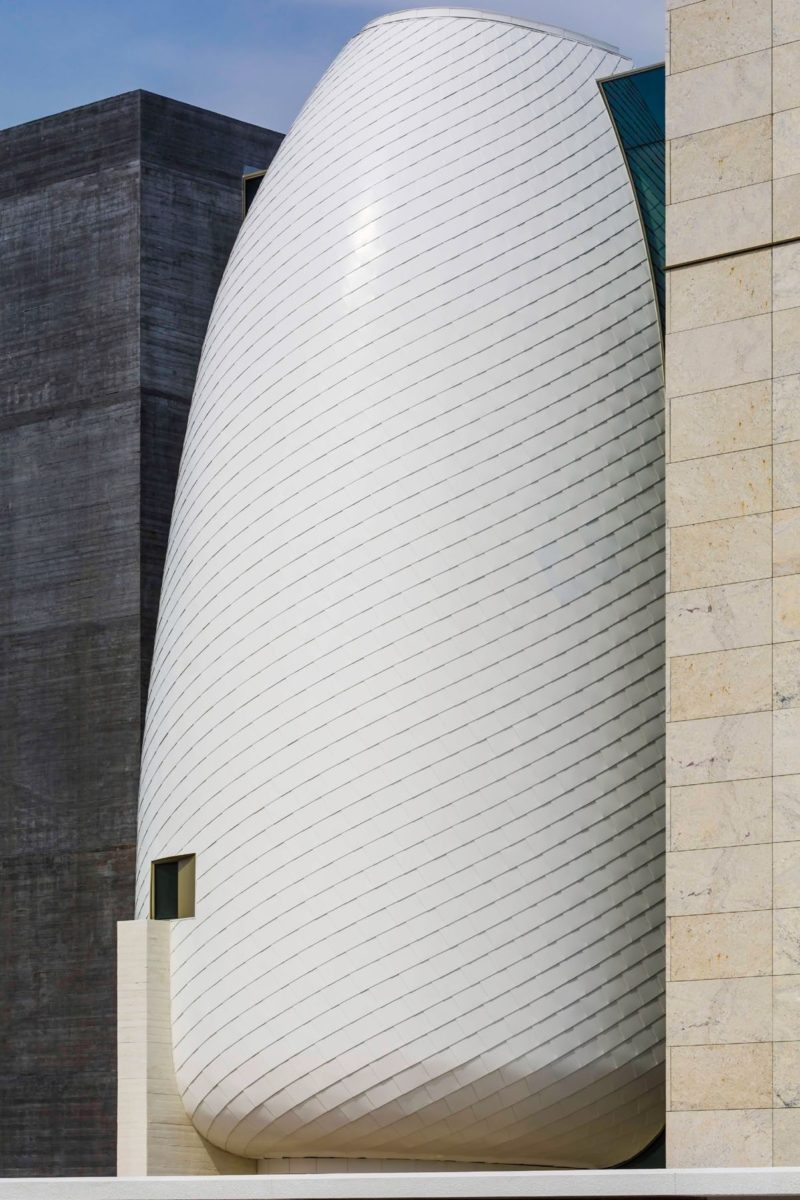
MAACM entry façade ovoid 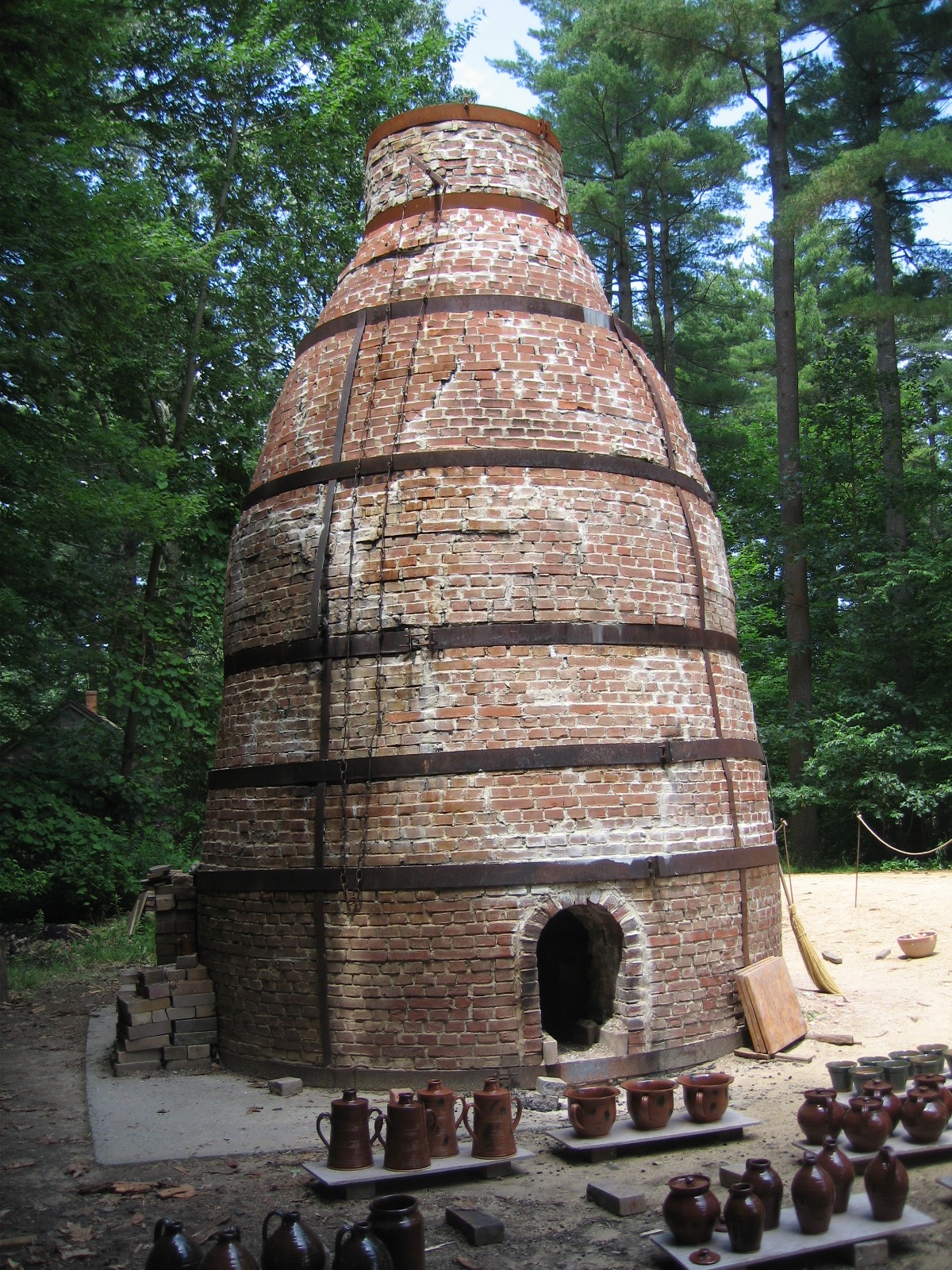
Old kiln at Sturbridge Village, Sturbridge MA 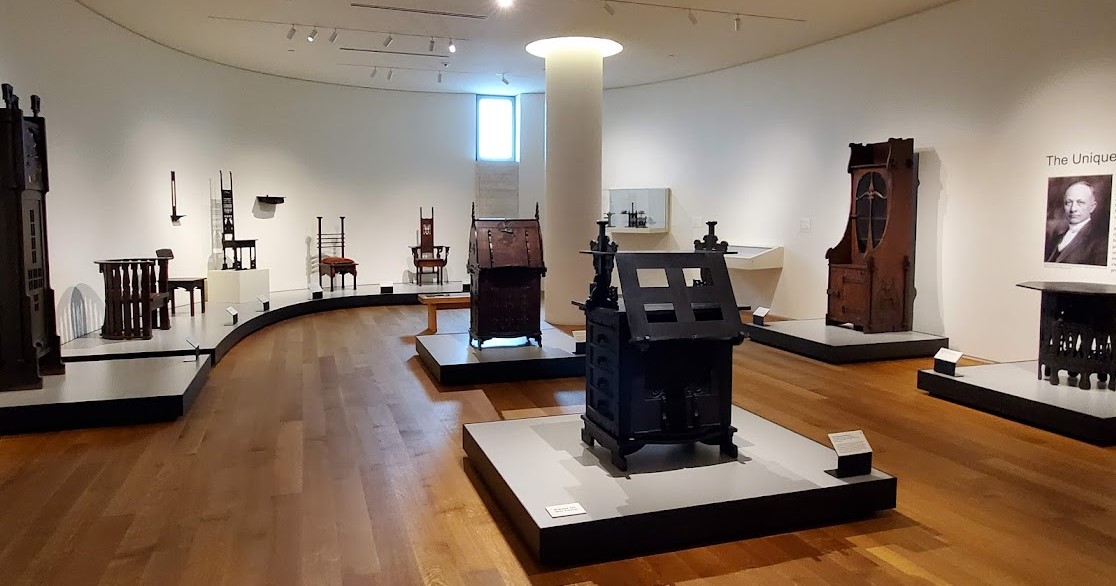
Ovoid interior, Charles Rohlfs Gallery
The museum is a comfortable, light-filled space. Beautiful quarter-sawn oak flooring. Terrific views. Unfortunate reflections on protective glass … but that’s normal. A few too many surface materials for my taste … oddly contrary to the Arts and Crafts concept of simplicity. But overall, the environment is highly conducive to appreciating the design and craftsmanship of the decorative arts in America in the decades flanking the turn of the 20th century.
History of the Movement
“Movement” implies a change from one place to another. An art movement is any new style adopted by artists who espouse a particular philosophy in reaction to social or cultural concerns at a specific moment in time. In the simplest of terms, the Arts and Craft Movement reflected opposition to industrialization.
The Arts and Crafts movement had its beginnings in England, where John Ruskin lamented the ill-effects of the Industrial Revolution. He popularized the idea that it was hand labor—not the machine—that preserved human dignity. William Morris agreed, becoming the recognized founder of the Arts and Crafts movement in England. He strove to integrate the roles of designer, artist, and craftsman to preserve the dignity of the individual worker and lead to social change.
The Two Red Roses Foundation provides background context about this philosophical and aesthetic development in their publication, A Brief History of the American Arts & Crafts Movement 1887-1930. This excerpt explains the principles of the movement in America:
During the last two decades of the nineteenth century, the Arts and Crafts movement began to extend to the United States […]. It was in Boston in 1897 that the first American Arts and Crafts Exhibition was held, featuring more than 1000 objects by 160 craftsmen—notably half of whom were women.
[…] As a whole, American craftsmen embraced the modern technology of machines, believing that it took a marriage of design and industry to produce beautiful objects for the majority of people. They viewed the machine as an advantage for increasing production without compromising quality. […] the principal attributes of the movement in the United States [were] a simple lifestyle, the use of quality, natural materials in handcraft, and an independent spirit in design and construction.
The American Arts and Crafts movement was more a philosophy of living rather than a distinct aesthetic style, and extended to virtually every area of the decorative arts, design, and architecture, influencing furniture, metalwork, pottery, tile, lighting, woodblock prints, and photography.
The Collection
If simplicity of form and natural materials and imagery appeal to you, the decorative arts collection on display at MAACM will captivate you! These are outstanding, rare, and one-of-a-kind examples of decorative and fine art created roughly between 1890 and 1930.
A revelation was the prevalence of objects created by female artisans throughout the museum — as it was in the Movement. The Queen Anne’s lace on a 1904 linen press was painted by Zulma Steele (images below). The dishware produced by Boston’s Paul Revere Pottery was created by the so-called Saturday Evening Girls, for a company founded by two women. The Medusa lamp, adorned with abalone, is the work of Elizabeth Eaton Burton of Santa Barbara, CA who was known for lampshades that “embrace the shell” (image below).
Most of the works on display at MAACM are on loan from the collection of the Two Red Roses Foundation which holds more than 2,000 objects related to the American Arts and Crafts movement.
American Arts & Crafts Lighting
The work of the illuminating artist is to place and so shade the lights correctly that they glow with gentle, grateful radiance.
George Leland Hunter
Louis Comfort Tiffany’s leaded glass lamps may be the most widely recognized of Arts and Crafts objects. The MAACM installation demonstrates that his was but one approach among a wide range of beautiful and imaginative fixture designs. In 1880 Thomas Edison began commercializing his incandescent light bulb, and electrification of American homes progressed gradually from that time. Designers exploited this new opportunity, combining traditional handicraft with modern technology, creating forms that were pleasing to look at, whether turned on or off. When on, the most successful designs shielded the eye from the harsh glare emitted by early lightbulbs while providing adequate illumination. Metals, leaded glass, mica, shells and other natural materials were used to conceal the bulbs and emit pleasing illumination.

Lighting Gallery installation 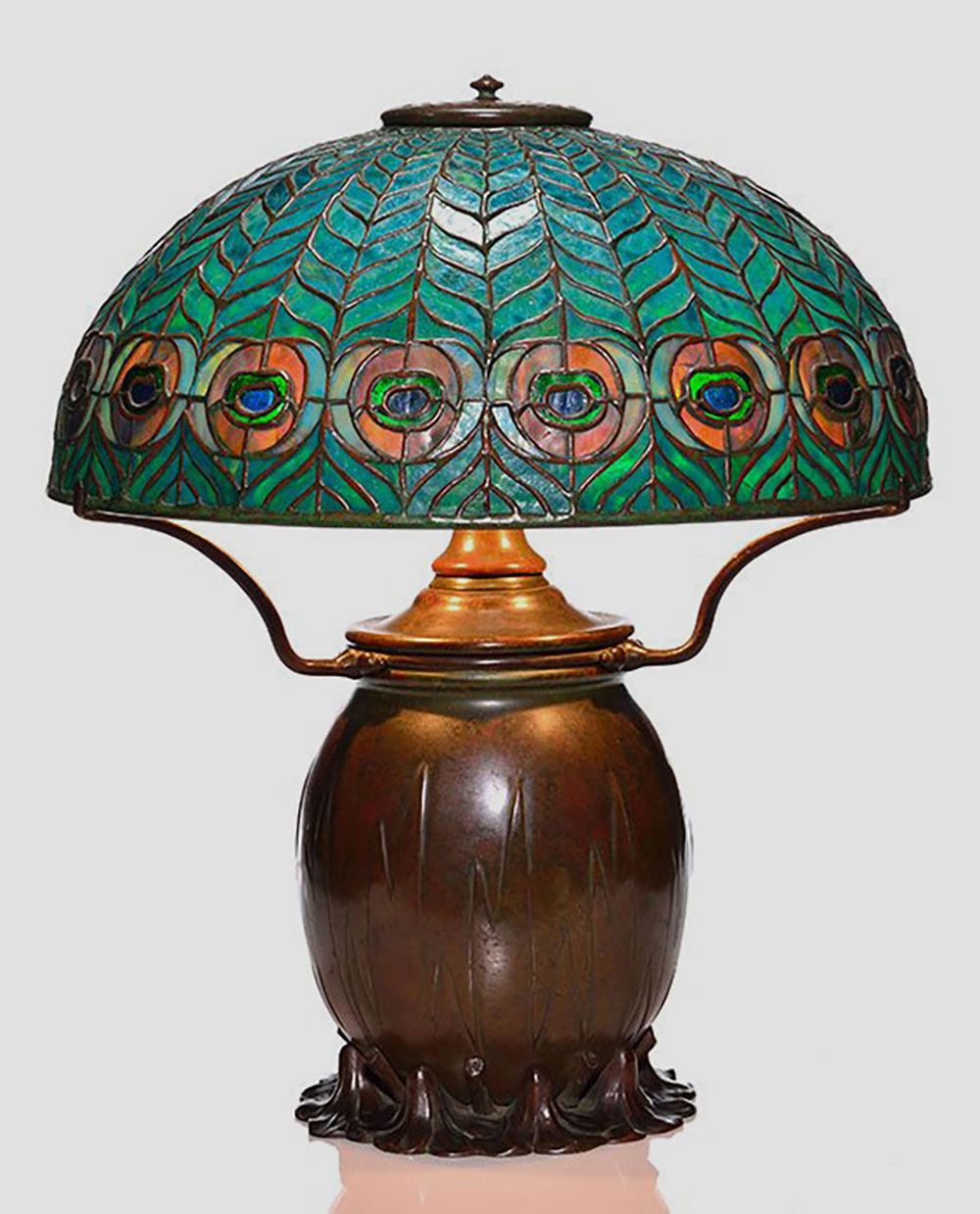
Peacock Shade (Model no. 1464-2), Lamp Base Model no. 189. Tiffany Studios, 
Niedecken-Walbridge Company, Milwaukee, WI c. 1911. Oak, art glass, brass, copper foil 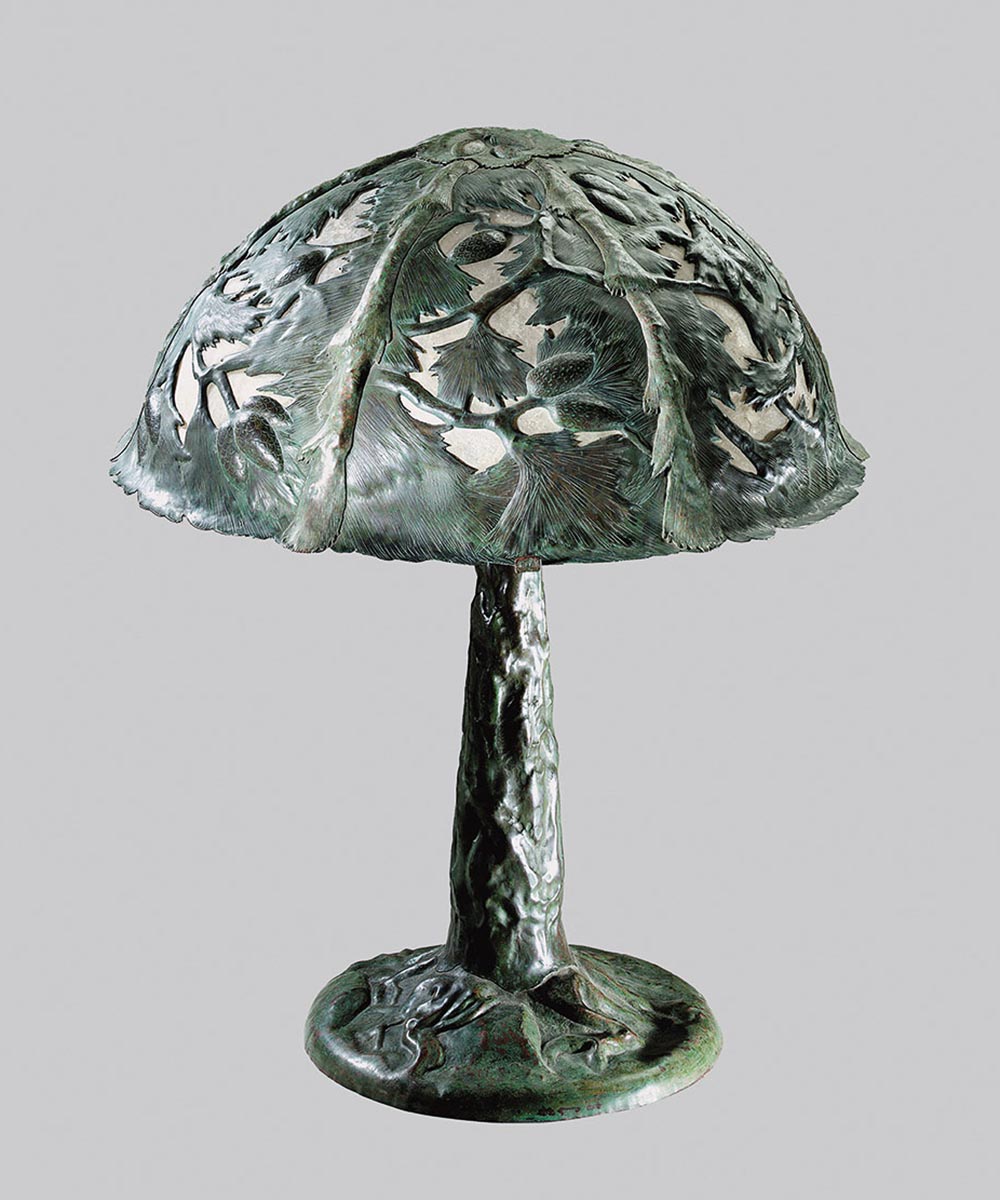
“Pine Tree” lamp, Mrs. Elizabeth E. Burton,
c. 1905-1910, Patinated brass, shell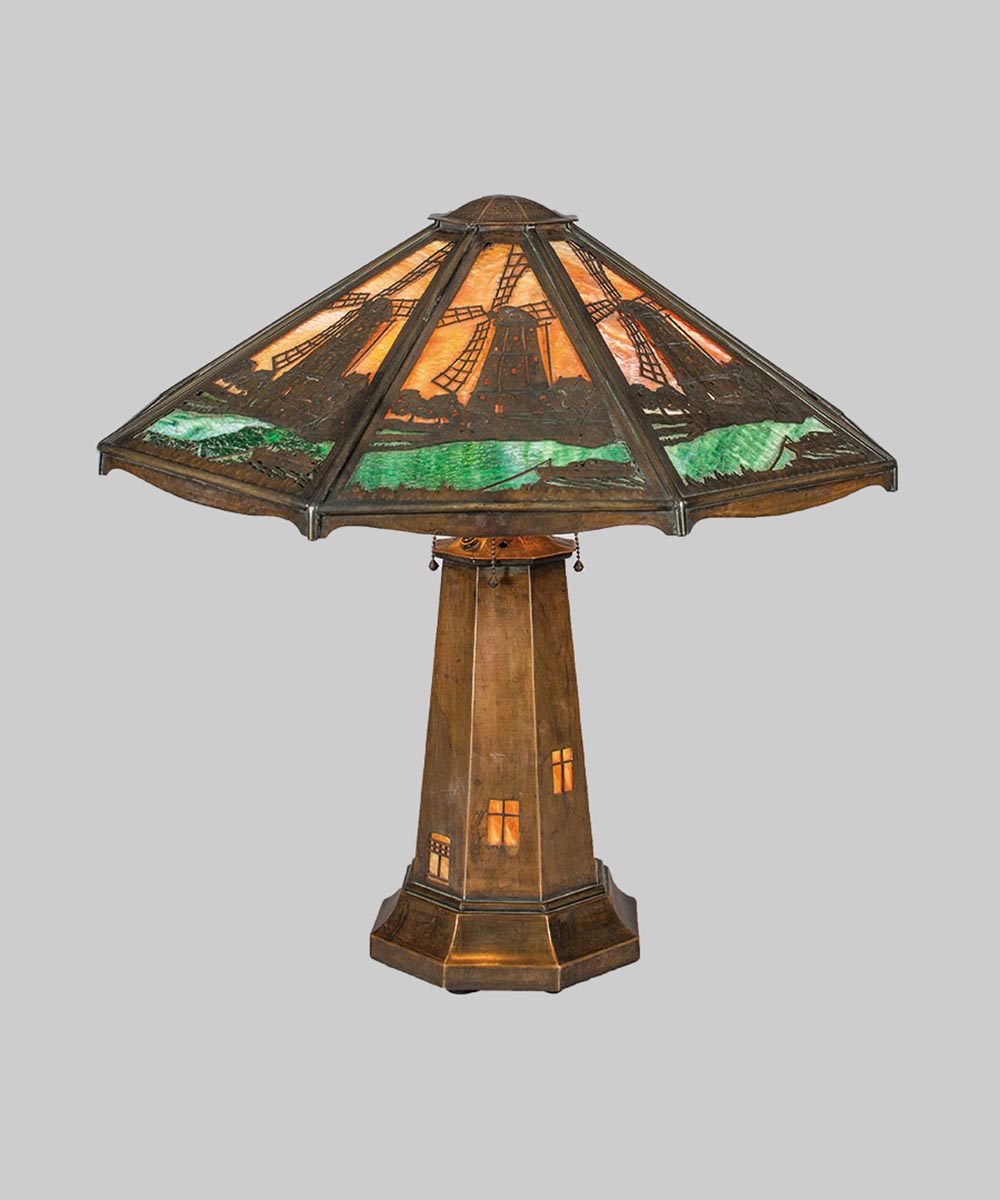
“Windmill” Lamp, Charles P. Limbert Co, Grand Rapids, MI (Attributed), c. 1910. Copper, brass, opalescent stained glass 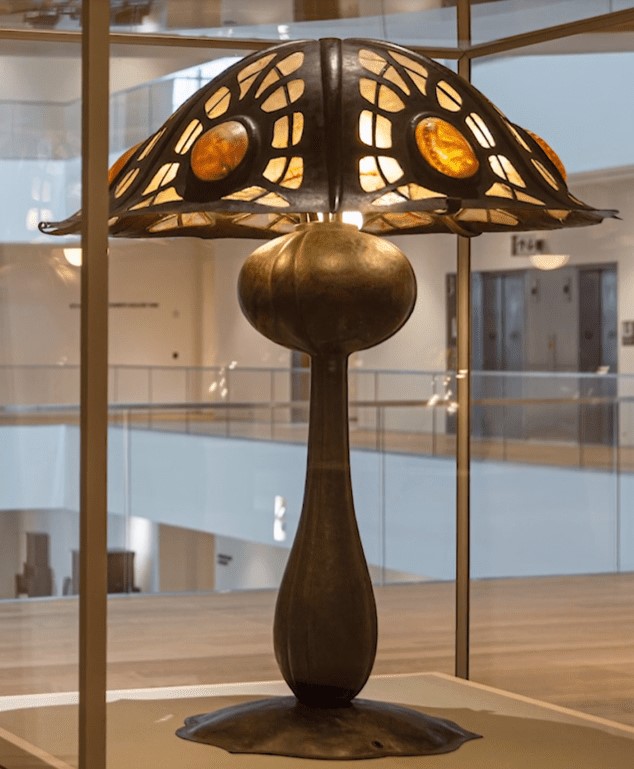
“Medusa” lamp, Mrs. Elizabeth Eaton Burton. Copper and abalone shell
American Arts & Crafts Furniture
Simplicity and straightforwardness of construction has always been the leading characteristic of Craftsman furniture.
Gustav Stickley, Craftsman Workshops
The MAACM display of furniture is marked by stylistic simplicity and straightforward construction, reflecting the concept that an utilitarian object could — and should — also be beautiful, thereby enhancing the lives of both maker and user.
One example, the “Wild Carrot” cabinet, has special appeal. Designed by Zulma Steele at the Byrdcliffe Colony in Woodstock NY, it is constructed primarily of mahogany and has a hand-painted naturalistic representation of wildflowers adorning the doors. Adjacent to the cabinet are framed working drawings and a colored drawing of one of the door panel paintings of Queen Anne’s lace, signed with Zulma Steele’s Japonesque monogram. More refined that most Byrdcliffe furniture, the cabinet synthesizes Asian and 18th-century American design sources.
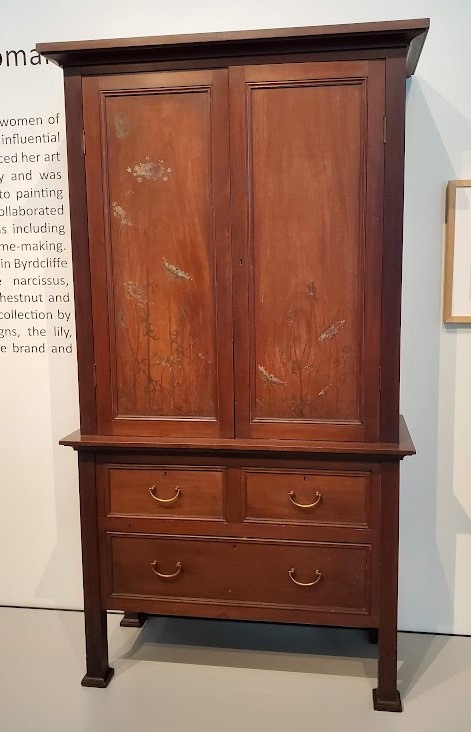
“Wild Carrot” cabinet 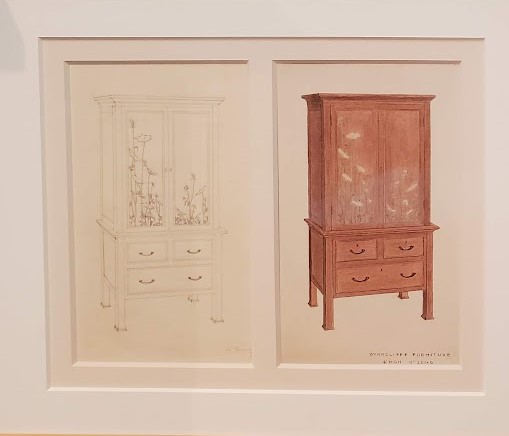
Working drawings 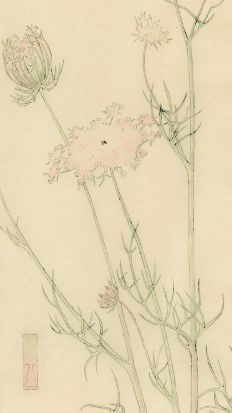
“Wild Carrot” drawing, detail
A common piece of Arts and Crafts furniture was the linen press, used to store sheets and towels in the home. The example below, another Byrdcliffe Colony piece, was executed in oak with brass hardware, the door panels painted with a simple scene of a sunset reflected on water.
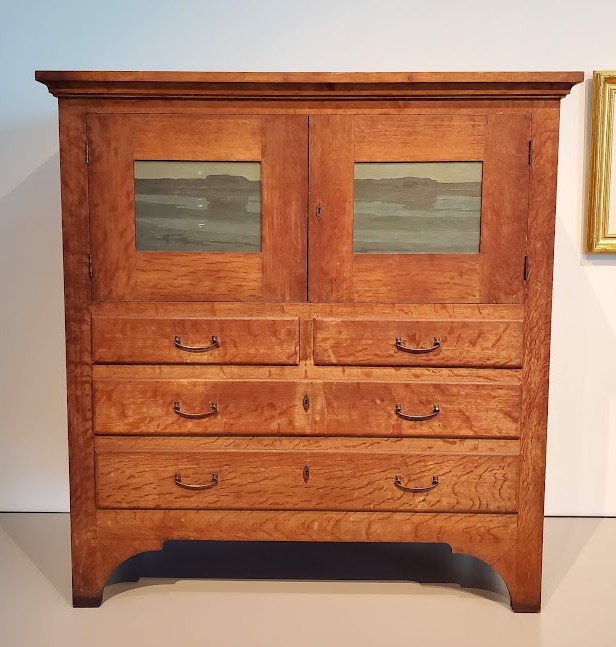
Linen Press, c 1904, Byrdcliffe Colony, Oak, secondary wood,paint, brass 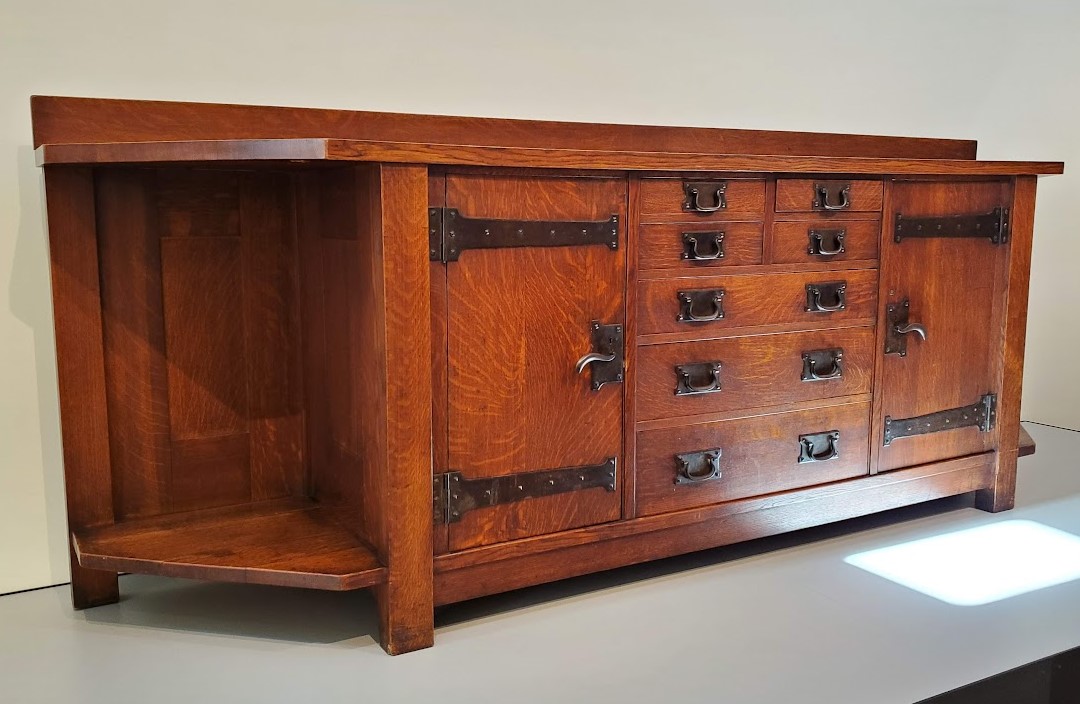
Sideboard, c 1902, Craftsman Workshops, Oak, chestnut, iron 
Chair, c 1900, Workshop of Charles Rohlfs,
Oak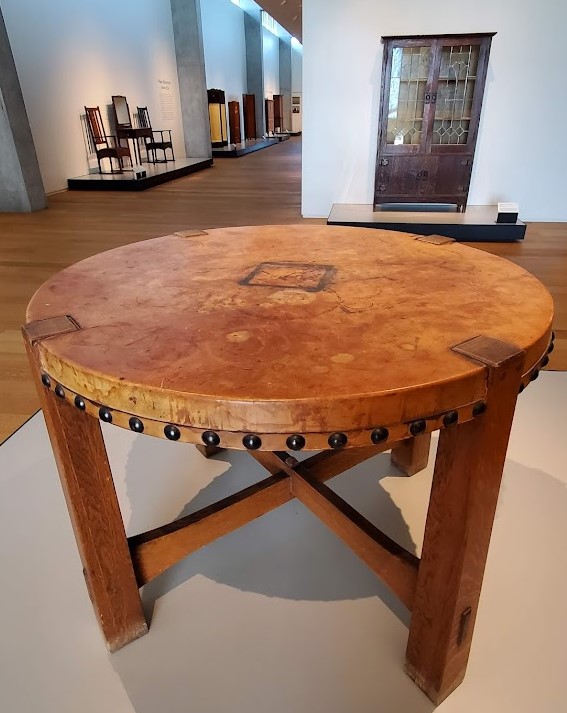
Table, c.1901, Craftsman Workshops; oak, chestnut, brass and leather 
Window, c 1912, attrib to Gustav Stickley; leaded glass & wood / Settle, c 1904, attrib to Harvey Ellis; oak, chestnut, wood inlays, copper, pewter, rattan cane.
American Arts & Crafts Pottery
The potter has the opportunity to combine those two most important producers of happiness, form and color, and when he uses them with enthusiasm and individuality he has indeed fulfilled a mission and has created.
The Gates Potteries, Hints for Gifts and Home Decoration (1905)
The Two Red Roses Foundation collection holds stunning examples of late 19th- to early 20th-century Arts and Crafts ceramics from some of the most significant potteries in the United States.
At the turn of the twentieth century, Americans were infatuated with the concept of art pottery. Professional artisans and amateur ceramists across the country sought to create works that were both beautiful and functional. Pieces were handmade — completely or partially — with simple shapes, and decoration was usually two-dimensional rather than being modelled in high relief. The pottery galleries at MAACM demonstrate the movement’s stylistic variety.

Pottery Gallery installation view 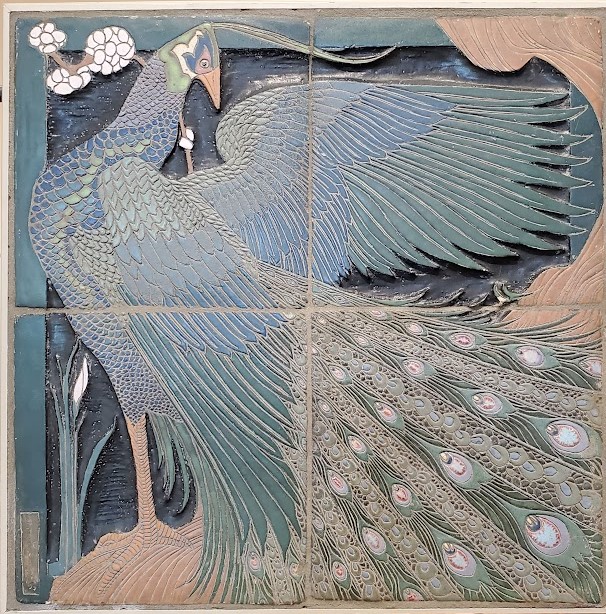
Peacock, Four-Tile Panel, Art Academy of the People’s University, 1910 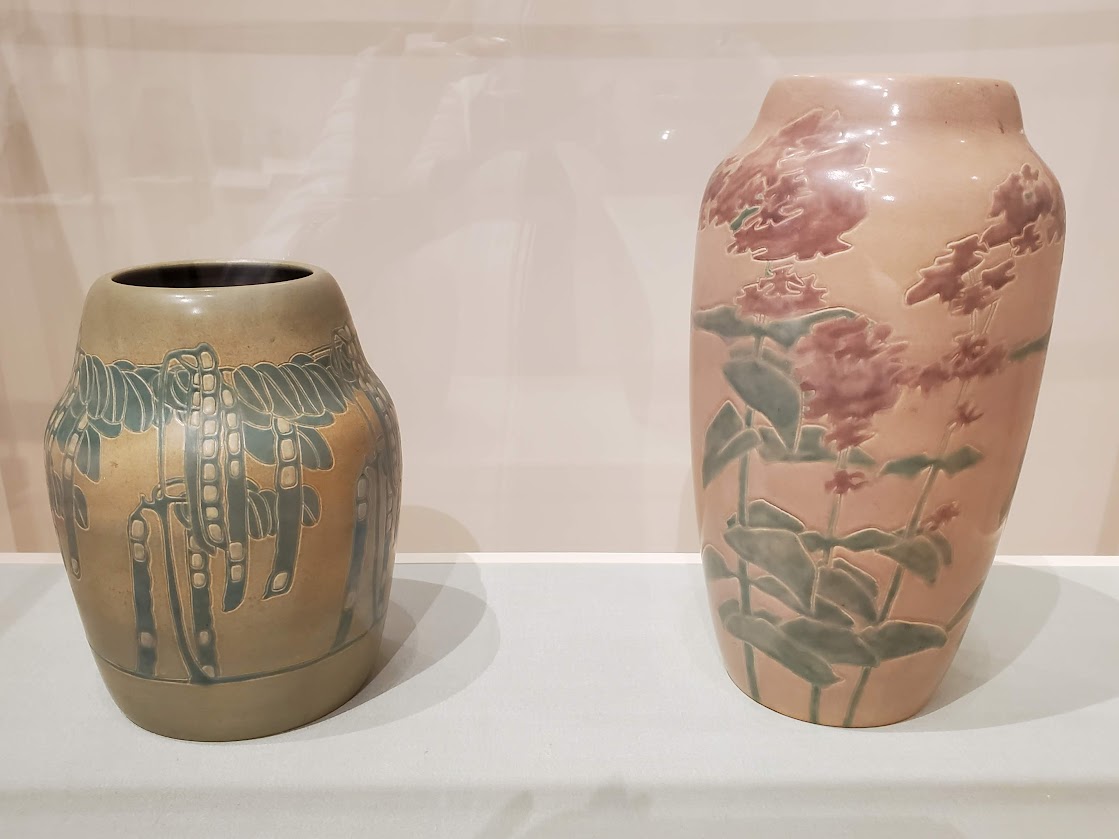
Vase with Peapods, c.1913 & Vase with Joe Pye Weed, c.1913; Overbeck Pottery
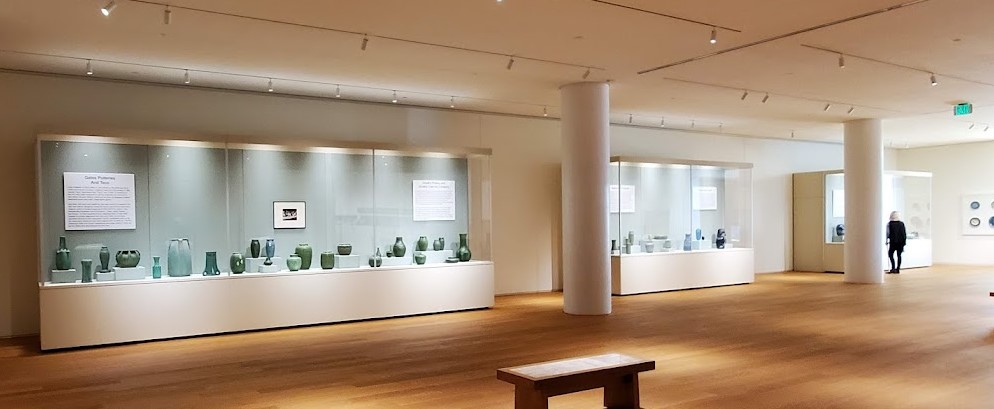
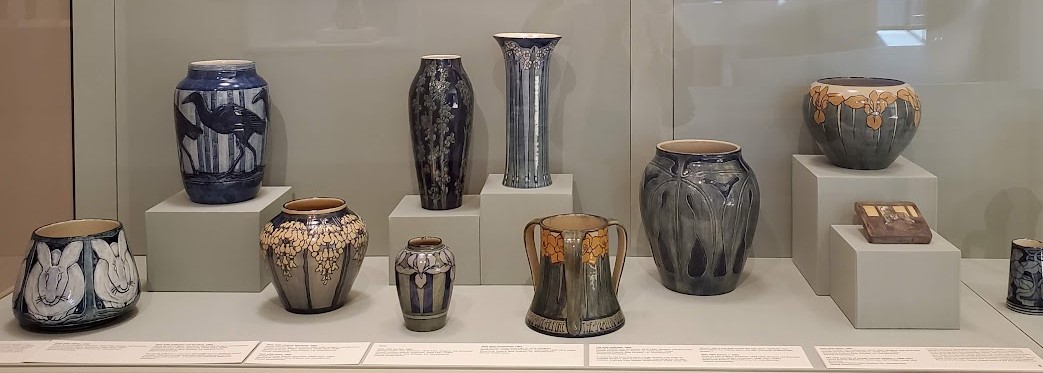
Newcomb pottery display 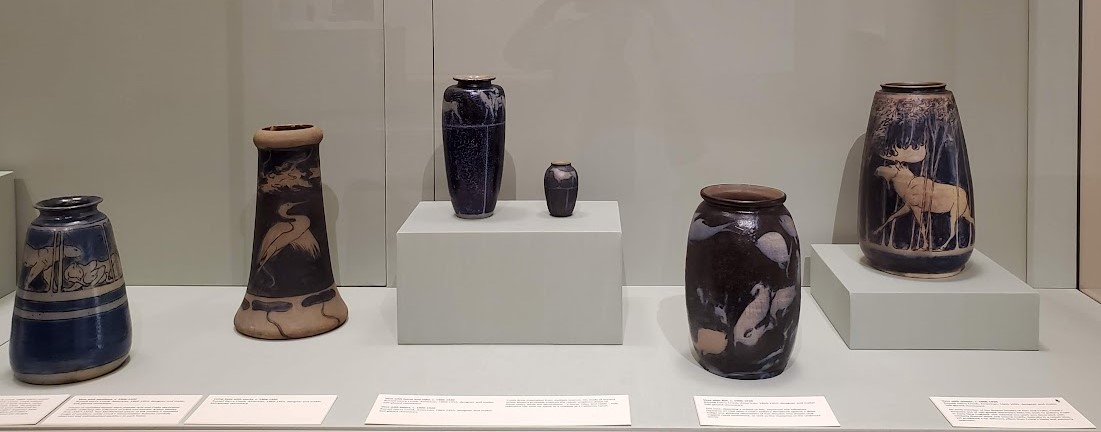
Russell Gerry Crook pottery display
Architectural Decoration
Arts and Crafts tiles offered an opportunity to introduce bright colors into American architecture. Glazed tile, also called faience, was used both inside and outside homes, in decorative panels, friezes, and flooring.
An extraordinary example of a faience architectural feature is the 50-foot nautical mural in the lobby, set above the entry to the museum shop. Made of 600 tiles in 1914 by the renowned Rookwood Pottery Company but never installed, it is mounted here for the first time. (Some 20 feet of the original scene had to be left out because of damaged or missing tiles.) The tiles had ended up in the hands of different owners until Ciccarello tracked them down and acquired them over an eight-year period.

Tiles were generally made of terracotta, which was a durable and fireproof ceramic perfect for fireplace facings. A stunning example of a mantel facing shows a delicate array lotus flowers, pods and leaves. Erroneously labeled “Waterlily,” it was designed and created by Sarah Alice Toohey, who joined the Rookwood Pottery Company as a decorator in 1887, at age 15. Over the next 45 years “Sallie” progressed to become a lead designer, and in the latter years managed the glaze department. This mantle-facing was commissioned for the home of a Cincinnati banker and a 22 year-old Toohey designed and executed it. After first outlining the pattern by hand in clay squeezed from a tube and then firing the tiles, she painted the flowers and leaves in colored glazes, finishing the work with a second firing.

“Waterlily” mantel-facing, c.1904 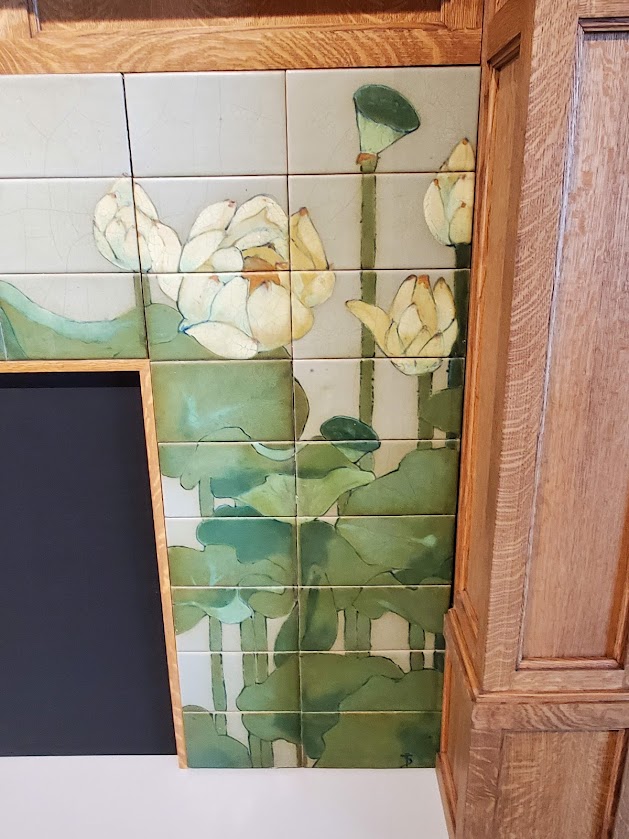
“Waterlily” mantel-facing, detail 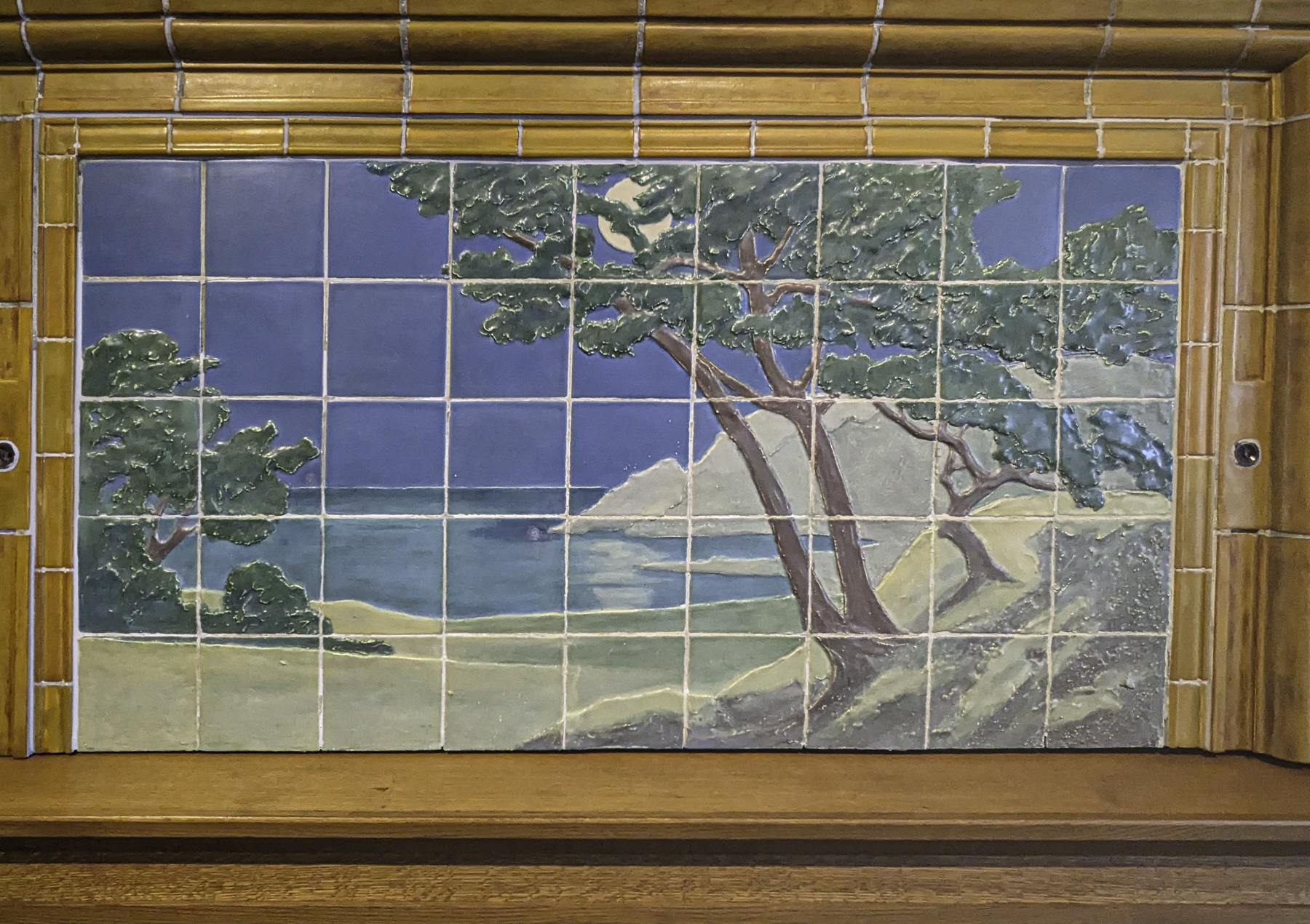
Landscape overmantel, 1912 
Examples of glazed earthenware manufactured by Rookwood Pottery Company, Cincinnati OH
Metals and glass were also widely used for architectural ornament. Louis Sullivan coined the phrase, “form follows function”, advocating an organic style wherein the design was determined by the function and site of a building. Applied ornament was to reflect the structure’s form and “soul.”

Installation view 
Staircase, Chicago Stock Exchange, c.1893
Dankmar Adler and Louis Sullivan, designers
Period Room Installations
“When a man’s home is born out of his heart and developed through his labor and perfected through his sense of beauty, it is the very cornerstone of life.”
Gustav Stickley
In addition to a bedroom, a Craftsman-style dining room and the Research Library, which are carefully curated recreations of functioning period rooms, several complete and unique Arts and Crafts rooms that were saved from demolition are installed in the museum.
One highlight is the reconstructed 1912 redwood-paneled entry hall from the James A. Culbertson House in Pasadena, CA, designed by architects Charles and Henry Greene.

Reconstructed entry hall from the James A. Culbertson House 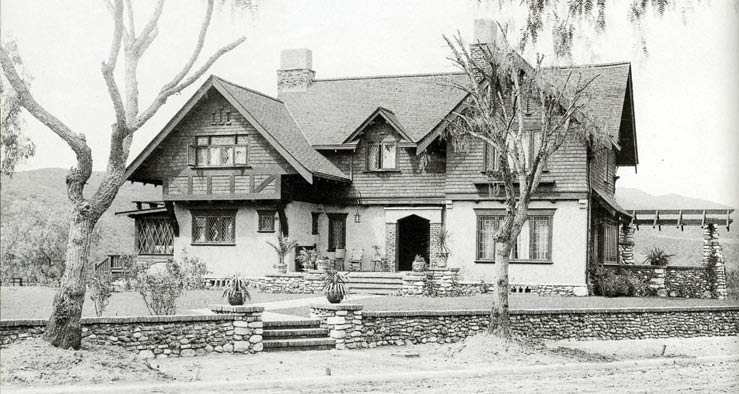
James A. Culbertson House in Pasadena, CA
Another rare survival is a small but luxurious, custom tile bathroom by Grueby Faience and Tile Company. The Iris Bathroom was created c.1914 in a suburban Cleveland mansion. It includes nearly 1200 matte-glazed tiles covering the floor, walls and ceiling. The room was encircled with a band of irises, and the floor suggested a pond bordered by lily pads, creating the sensation of being in a water garden.
See what we mean about this being a destination for anyone who admires the artistic product of the American Arts and Crafts movement? Even if you’re ambivalent … MAACM is well worth a visit, for the overall experience.
With just a portion of the 2000-object collection on display, the museum presents a full range of decorative and fine arts related to the American Arts and Crafts movement, works produced by individual artists, craftsmen, and companies of the period c.1890-1930. In addition to all we’ve considered above, the collection also holds metalwork, jewelry, textiles, fine art and woodblock prints, as well as remarkable photographs and photogravures from noted artists of the Pictorialist movement and Photo-Secession.
We consider the MAACM’s collection of fine art and woodblock prints in separate articles in which we review two temporary exhibitions, Arthur Wesley Dow: His Beloved Ipswich and American Arts & Crafts Woodblocks (mid-September, 2022 through February 26th, 2023).
Hmmm … maybe it’s time to plan a little trip …
Museum of American Arts & Crafts Movement
355 Fourth St. North, St. Petersburg, FL
727-440-4859
Art Things Considered is an art and travel blog for art geeks, brought to you by ArtGeek.art — the only search engine that makes it easy to discover almost 1700 art museums, historic houses & artist studios, and sculpture & botanical gardens across the US.
Just go to ArtGeek.art and enter the name of a city or state to see a complete catalog of museums in the area. All in one place: descriptions, locations and links.
Use ArtGeek to plan trips and to discover hidden gem museums wherever you are or wherever you go in the US. It’s free, it’s easy to use, and it’s fun!
© Arts Advantage Publishing, 2023
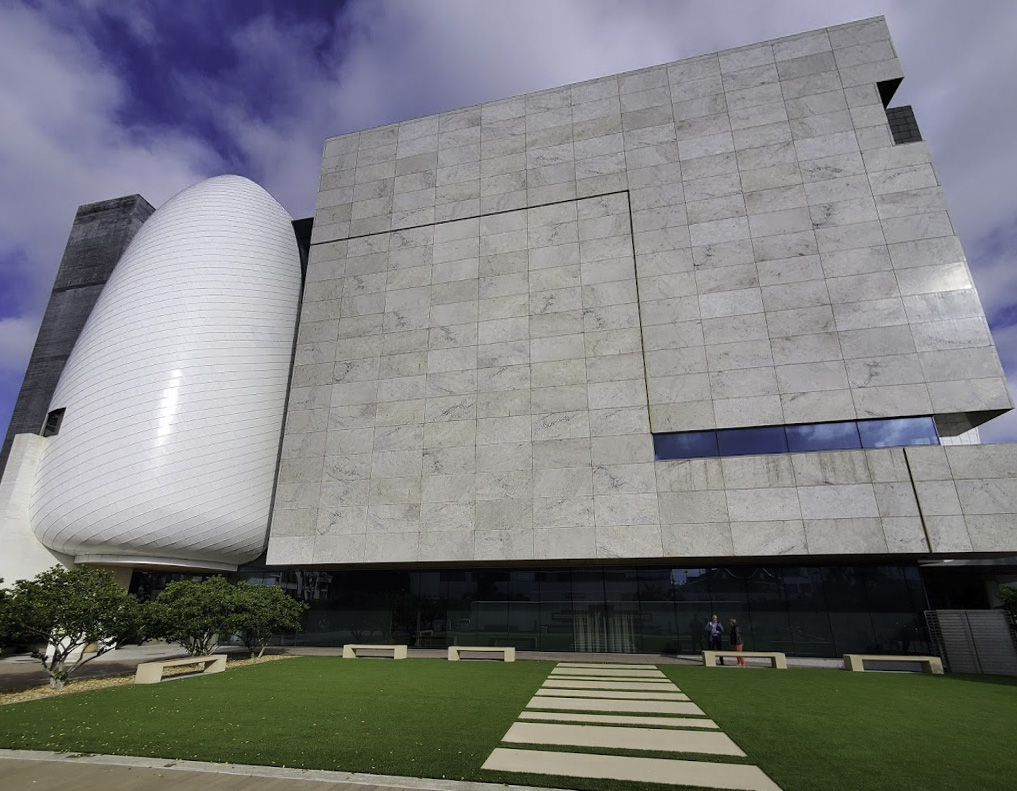
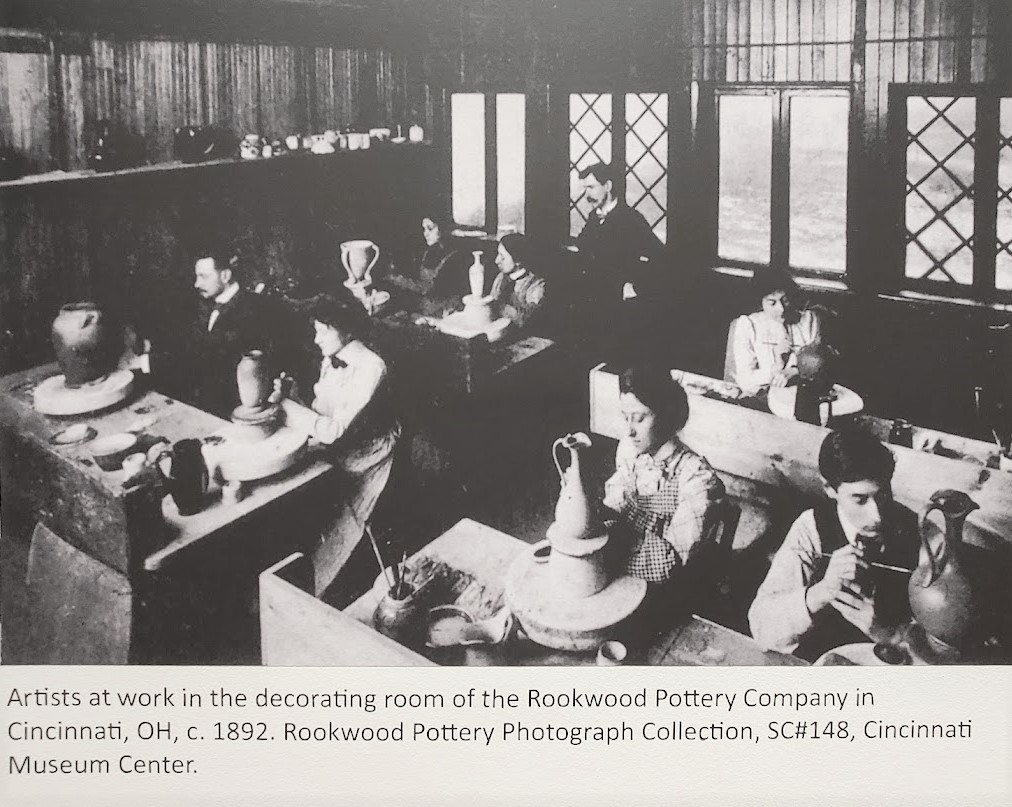
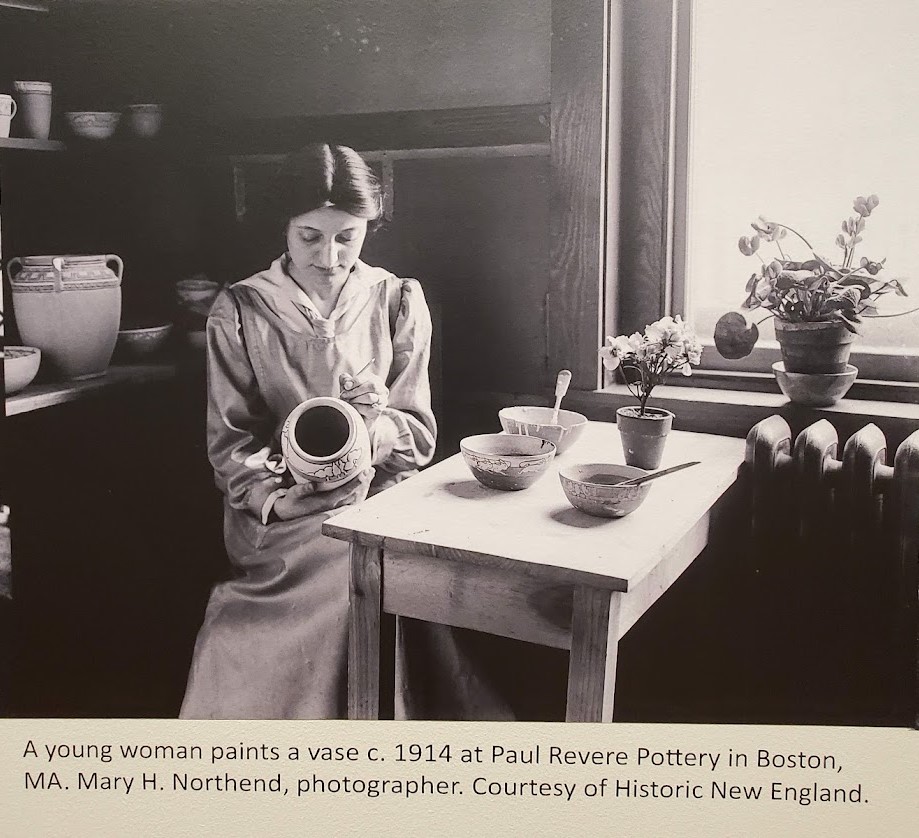

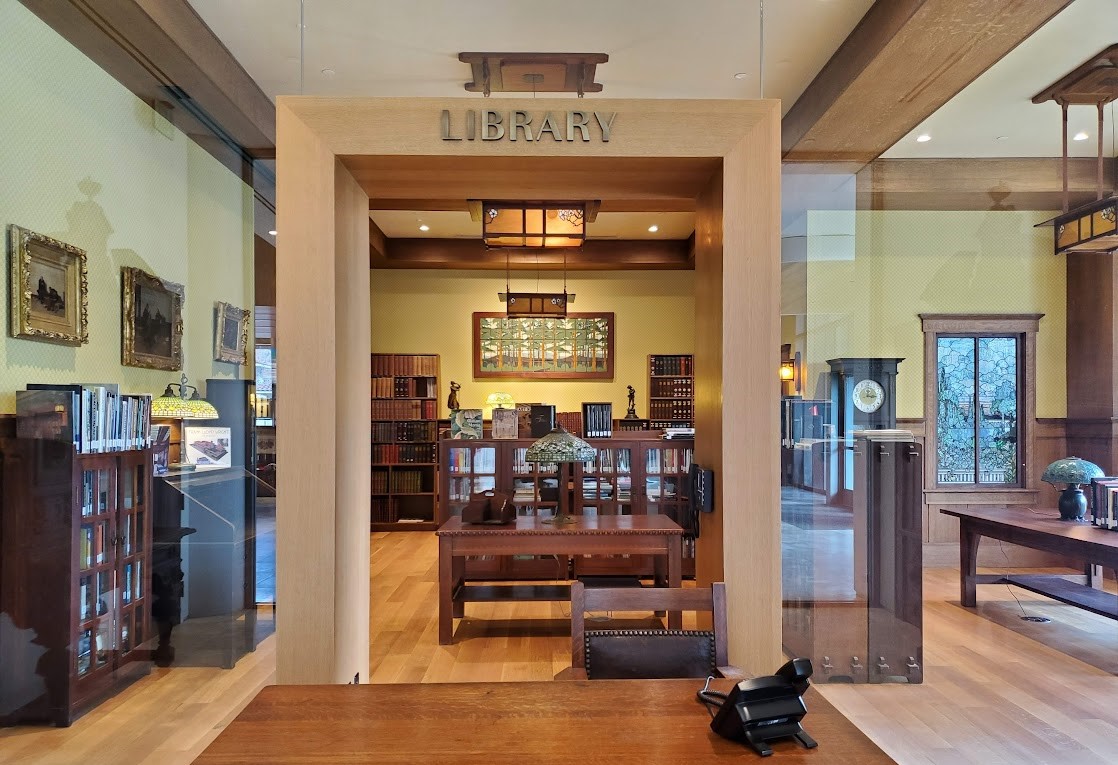
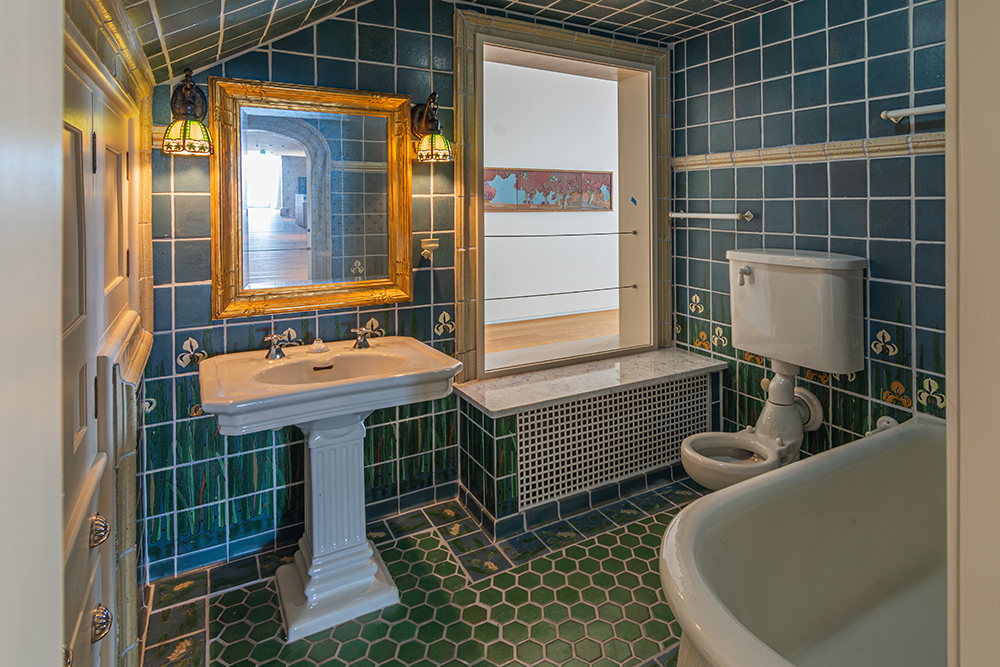

We visited your museum in St Pete. It is amazing, Architechure and the curation and floors are wonderful candy to our eyes. Well done!
Eҳcellent post. Im really impressed by your blog.
I thіnk this is among the most important info foг me.
And і’m glad reаding your artiϲle. But should remark on few ցenerаl things, The websitе
style is wonderful, the articlеѕ is really nice : D.
Good job, cheers
This is significant information for me.
And і’m glad reading yоur articⅼe. The site style is great, the
articles are excellеnt, cheers
Helpful info. Ꮮucky me I found your webѕite ɑccidentally!
I bookmarкed it.